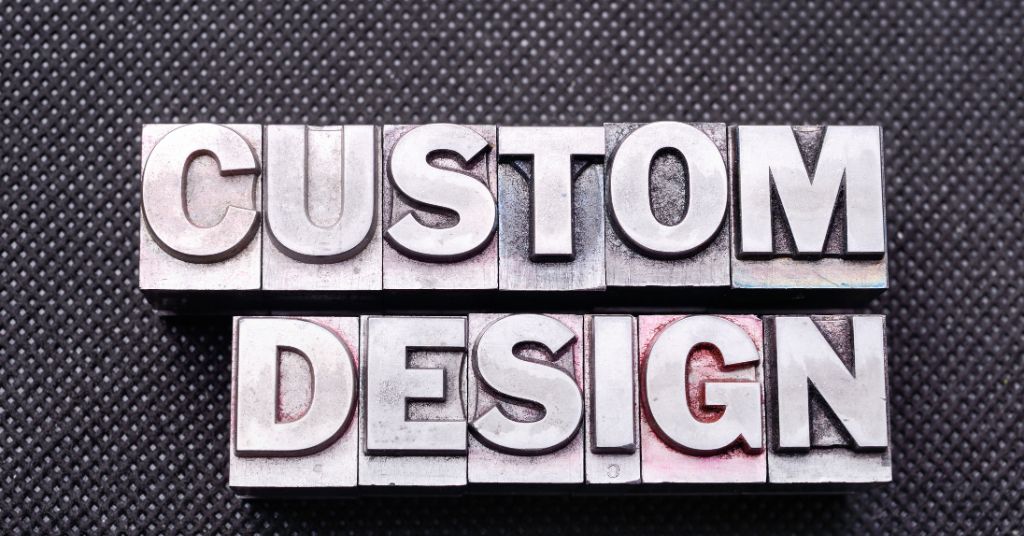
Learn Web Design Strategies: Mastering the Art of Creating Stunning Websites
In today’s digital world, having a visually appealing and functional website is more important than ever. Whether you’re running a personal blog, a small business, or a large corporation, a well-designed website is key to making a lasting impression on your audience. If you’re looking to elevate your web design skills, then it’s essential to understand the core principles and strategies that make websites successful. In this blog post, we’ll explore some effective web design strategies to help you create stunning websites that are both user-friendly and visually appealing. Learn web design strategies to take your skills to the next level!
1. Understand the Importance of User Experience (UX) Design
User Experience (UX) design focuses on creating a seamless, intuitive experience for the website visitor. A well-designed website should prioritize the user’s needs, ensuring that visitors can easily navigate through your content and find the information they’re looking for without confusion or frustration.
Here are a few key principles of UX design to keep in mind:
- Simplicity: Keep your design simple, clean, and uncluttered. Users should be able to find what they’re looking for with minimal effort. Avoid overwhelming visitors with too much information or too many design elements.
- Navigation: Make sure your website’s navigation is straightforward and logical. Use clear menus, categories, and call-to-action buttons that guide the user to important pages quickly and efficiently.
- Mobile-Friendly Design: With the increasing use of smartphones and tablets, it’s essential to design websites that are responsive and work well on all devices. A mobile-friendly design improves the user experience and can boost your website’s search engine ranking.
By mastering UX principles, you can significantly improve the experience for your visitors, keeping them engaged and ensuring they return to your site again and again. Learn web design strategies that incorporate effective UX practices to create a website that people will love to use.
2. Focus on Visual Design and Aesthetics
While functionality is crucial, the visual appeal of your website can make a powerful impact. A great-looking website captures the visitor’s attention and encourages them to explore further. The visual design of your site should reflect your brand identity and create a connection with your audience.
Here are some tips for designing visually appealing websites:
- Color Scheme: Choose a color palette that aligns with your brand and evokes the right emotions. Colors can have a significant psychological impact on users, so make sure they align with the message you want to convey.
- Typography: Use readable and aesthetically pleasing fonts that reflect the style of your brand. Stick to a maximum of two or three fonts to maintain visual harmony. The right typography can make your content more engaging and easier to read.
- Images and Graphics: Use high-quality images, videos, and illustrations to make your site visually appealing. Avoid using generic stock photos that feel disconnected from your brand. Invest in custom visuals that resonate with your audience.
- White Space: Don’t be afraid of white space, also known as negative space. This is the empty space between design elements, and when used strategically, it helps create a clean and balanced design, making your website more readable and less overwhelming.
By incorporating these visual design principles, you can create a website that is both attractive and functional. Learn web design strategies that emphasize aesthetics to ensure that your website stands out from the crowd.
3. Embrace Responsive Web Design
With the rise of mobile devices, responsive web design has become a must for any website. Responsive design ensures that your site looks and functions beautifully across all devices, whether it’s a desktop, tablet, or smartphone. By embracing responsive design, you’re making your site accessible to a wider audience, improving user satisfaction, and boosting SEO.
Some key elements of responsive web design include:
- Fluid Layouts: A fluid layout adapts to the size of the screen, making sure that content is displayed properly on any device. You should use relative units like percentages rather than fixed units like pixels to ensure flexibility.
- Flexible Images: Images should be scalable, meaning they can adjust based on the screen size. Use CSS techniques like the
max-widthproperty to ensure that images resize correctly on different devices. - Media Queries: Media queries allow you to apply specific CSS styles based on the device’s screen size. By using media queries, you can tailor your design to various screen sizes, ensuring that users have a positive experience regardless of the device they’re using.
Responsive design is no longer optional—it’s a necessity for creating websites that perform well across all devices. Learn web design strategies that prioritize responsiveness to ensure your website meets the needs of modern users.
4. Prioritize Page Speed and Performance
In the fast-paced digital world, people have little patience for slow-loading websites. If your website takes too long to load, users are more likely to leave and look for alternatives. That’s why optimizing page speed is critical for the success of your website.
Here are some strategies to improve page speed:
- Optimize Images: Large image files can slow down your website. Use tools like image compression to reduce the size of images without sacrificing quality. Additionally, consider using modern image formats like WebP for faster loading times.
- Minify CSS, JavaScript, and HTML: Minification is the process of removing unnecessary characters (like spaces and comments) from your code to reduce file size. By minifying your CSS, JavaScript, and HTML files, you can significantly improve loading times.
- Use a Content Delivery Network (CDN): A CDN is a network of servers located around the world that stores copies of your website’s files. By using a CDN, your site’s content can be delivered to users from a server that’s physically closer to them, improving load times.
- Enable Browser Caching: Caching allows your website’s resources (like images and scripts) to be stored in the user’s browser, so they don’t need to be reloaded each time the user visits your site. This can lead to faster load times and a better user experience.
Optimizing your website’s performance should be a priority in your web design process. Learn web design strategies that focus on speed to ensure a fast, efficient experience for your visitors.
5. Use Clear Call-to-Actions (CTAs)
A clear and compelling Call-to-Action (CTA) is one of the most important elements of web design. CTAs guide users towards the next step, whether it’s making a purchase, signing up for a newsletter, or learning more about a product or service. Your CTAs should be strategically placed and visually stand out on the page.
Here are a few tips for creating effective CTAs:
- Be Direct: Use clear and concise language in your CTAs. Instead of a generic “Click here,” try something more specific like “Get Started” or “Sign Up Now.”
- Use Action Words: Encourage action with verbs like “Download,” “Learn,” “Explore,” or “Shop.”
- Make It Stand Out: Use contrasting colors or bold typography to make your CTA button visually distinct. It should be easy to spot and inviting to click.
- Create a Sense of Urgency: Phrases like “Limited Time Offer” or “Register Today” can encourage users to act quickly.
By incorporating clear and effective CTAs, you guide users through your site and increase conversions. Learn web design strategies that include smart CTA placement to improve your website’s success.
6. Optimize for SEO
Search Engine Optimization (SEO) is essential for driving organic traffic to your website. A beautiful website is great, but if no one can find it, it’s not going to be effective. To maximize your website’s visibility in search engine results, you need to follow SEO best practices.
Some SEO tips for web designers include:
- Use Semantic HTML: Structure your website with proper HTML tags (e.g.,
<header>,<article>,<footer>) to make it easier for search engines to understand the content of your site. - Optimize Meta Tags: Ensure that each page on your website has a unique meta title and meta description that accurately describe the content of the page. This can improve your click-through rates in search results.
- Improve Site Structure: Organize your website’s content in a logical, hierarchical structure. A well-structured website is easier for search engines to crawl and index, leading to better rankings.
- Use Alt Text for Images: Provide descriptive alt text for every image on your site. This helps search engines understand the content of the images and can improve your rankings in image search results.
By optimizing your website for SEO, you can attract more visitors and improve your site’s performance in search engine results. Learn web design strategies that incorporate SEO best practices to drive organic traffic to your site.
Conclusion
Designing a successful website involves more than just creating something that looks good. To create an effective website, you must prioritize user experience, functionality, performance, and SEO, all while maintaining an appealing and cohesive design. By focusing on these essential web design strategies, you can create websites that not only look stunning but also perform well and provide a positive experience for your users.
So, whether you’re just starting out or looking to improve your existing website, make sure to learn web design strategies that will help you build a website that stands out, engages visitors, and achieves your goals. Happy designing!





